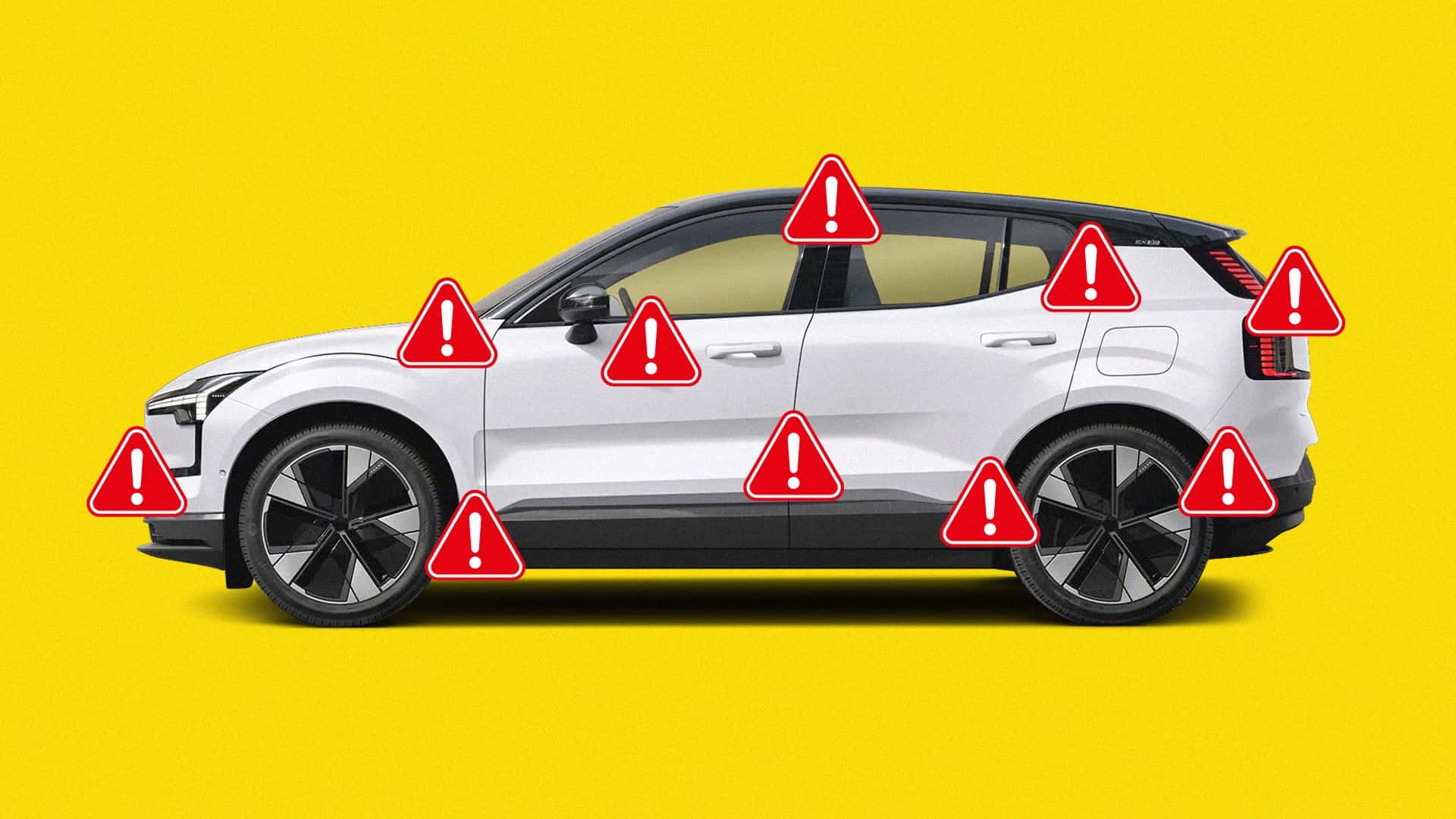
I've never yelled at a car more than this one—and I mean outwardly, openly expressing frustration at an inanimate object.
A two-mile trip down the road to the grocery store should be entirely uneventful. But for some reason, the Volvo EX30 won't stop beeping at me. My crime? Taking too long to adjust the fan speed. "Keep your eyes on the road," it warns me. But this is a problem you, the vehicle, created.
To keep the EX30 cheap—starting at just $46,195 in the US—Volvo went heavy on cost-cutting. There are virtually no hard buttons in the entire cabin, save for two window switches in the center console. The door panels have no electronics within them, either; the speakers sit ahead of the driver and passenger on the dash, while the door locks are touch-capacitive controls in the center console. Even most of the materials in the cabin are recycled.
But recycling isn't the problem here—it's the lack of physical controls.
In order to adjust the fan speed or temperature in the EX30, it forces you to crane your neck downward to the bottom of the 12.3-inch touchscreen just to access the on-screen controls, which are then buried two presses within a separate menu. In doing so, there's no other choice but to take your eyes off the road, which causes Volvo's Big Brother driver monitoring system to react quickly, reminding you to keep your eyes straight ahead at all times.
Yawn for too long? Take a break. Manually change the radio station? Not on Volvo's watch. Linger on the horizon for a moment as you long for existence beyond the walls of this confounded machine? Don't even think about it, pal.

This disease has spread like a plague among automakers, not just Volvo. Everything lives on the touchscreen now. But even other notoriously guilty parties like Mercedes-Benz and Lucid offer some reprieve in the form of physical controls for basic functions.
In the EX30, the company begs—nay, pleads with you to use its native Google Assistant voice control system. Admittedly, it's better than most, responding quickly to things like changing the temperature or adjusting the fan speed. But it's still more annoying than simply twisting a knob or pressing a toggle.
To be fair to Volvo, some traditional controls have moved to the steering wheel, like volume rockers and menu options. Fine. But even then, it's essentially a single piece of black plastic on either side of the wheel with small divots separating individual options. The click function is lousy, and the lack of separation between those buttons makes it easy to accidentally hit the wrong thing.

A two-mile trip down the road to the grocery store should be entirely uneventful. But for some reason, the Volvo EX30 won't stop beeping at me.
And it's not just the lack of physical controls that makes the EX30 such a ridiculously overthought machine. There's no instrument cluster or head-up display. The speed, range, trip, and safety systems are all crammed onto a little space at the top of the center screen, forcing you—again—to look just off the road to make sure you're not over the speed limit or out of battery.
Those fixed menus also mean that your smartphone projection doesn't take up the entirety of the otherwise pretty center touchscreen; Apple CarPlay is bordered top and bottom by Volvo's native software. It's certainly not this car's worst offense, but it adds to the laundry list of annoyances. And if you're an Android user—sorry. Even though Volvo's operating system is a Google Built-In interface, it doesn't have Android Auto connectivity. It’s almost hard to believe.
The EX30 also doesn't have a key fob. Instead, Volvo mimics Tesla with a key card. It's an interesting idea in theory; a credit card-sized accessory you scan on the driver's side door to unlock the vehicle, then slide into your wallet. But Volvo must have forgotten that house keys exist.

To actually drive the vehicle, you have to put the key card in a charging slot near the floorboard, beneath the touchscreen. And if anything other than the key card—say, a key chain or house key—comes in contact with the charging slot, a warning on the screen tells you to remove any of those accessories. Who thought this was a good idea?
Better yet, the key card is hit and miss when unlocking the door—especially when it’s raining. Nothing better than standing in the pouring rain while slapping a key card onto the side of the Volvo’s door multiple times while a puddle seeps into your sneakers.
It’s a shame, because the EX30 is an otherwise solid vehicle. It looks great, it’s comfortable, it’s quiet, and it’s nice to drive when it isn’t beeping at you. There are also a handful of clever storage solutions up front, including a magnetized shelf and adjustable cup holders.

The 253 miles of standard range in the US isn’t great, admittedly, but this car does charge very quickly, getting from 10 to 80 percent in just 27 minutes at a 153-kilowatt DC fast charger. The 422 horsepower makes for impressive acceleration, too—more than you actually need in a car like this.
But I can’t get over the technological foibles; it makes the EX30 an absolute non-starter in my book. For a company so synonymous with safety, Volvo’s decision to complicate the EX30’s fussy UI is a massive misstep.







